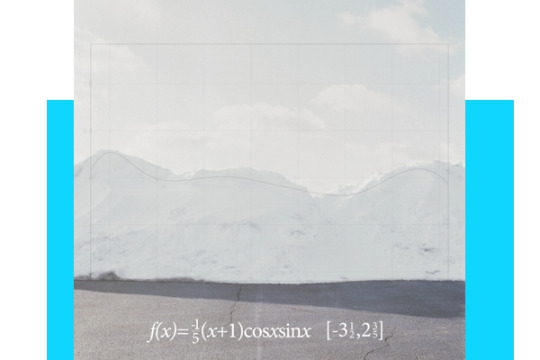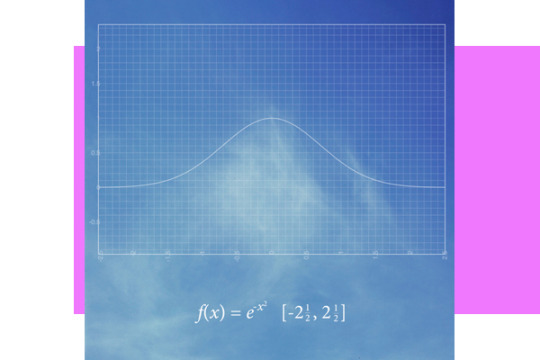Interview: Nikki Graziano

Nikki Graziano, photographer and mathematician sat down with me to discuss her work, inspiration and process.
Q: Could you start with a brief thematic introduction to your work?
A: My found functions series is the only project that I’ve worked on as a cohesive series. My aim was (is still) to sort of take a step back and focus on sublimity and the gaze in both an aesthetic and mathematical way, to communicate both ends of beauty in the natural world. My other work hasn’t been worked on as a project, at least not in the school sense. I’ve been photographing my peers for a while now and I like to try and create images around the uneasiness of being an early twenty-something, sort of stuck in this push/pull of this youthful, confident and endearing view of the world and this depressing, terrifying but also exciting reality of the professional “adult” world.
Q: Tell us a little about your background?
A: I was born in Rochester and later moved to the Jersey Shore where I stayed until I graduated high school, and then moved back to Rochester to attend RIT. My father went to school for photography and my mother for electrical engineering. I’m not sure how big of an impact that combination had on me because they never pushed either of those too heavily on me, but it’s interesting how it played out. It took going to school for an art to make me realize the parallel with math—both of which disciplines my parents have a hard time completely identifying with.

Q: How did you get into photography?
A: My father, originally. I started playing with his old stuff in the basement while I was still in high school. He showed me his 4×5 view camera but told me I couldn’t use it because he didn’t trust me, so I set out to prove that I could use every other camera I could find. I learned with film, so I fell in love with the process before anything. I took a whole new track with it when I got to college, though. I originally wanted to study photojournalism, until I realized I didn’t want to work for a newspaper, or at least, I didn’t want to fall into shooting only one way and for someone else. I began studying Art History and started thinking less about process and more about what I was trying to do, and ended up following the “fine art” route. I still enjoy shooting documentary work, though.
Q: How do you decide on locations & subjects?
A: With my found functions series, it’s kind of spontaneous. Most all of those images were shot while going on weekly walks—or in the winter, drives—and trying to find something. I was working on this project my third year/beginning of fourth year in school, so I was producing a lot of them a week, for thirty weeks. It got to the point where I’d just try to find math in anything, which is when I decided I needed a break from it. I’m still working on the project, but more at my own pace. When I see something I know I want to photograph, I do it. With any portraits or still lifes, it’s more along this pace too. I generally carry my camera with me whenever I go somewhere, so when I see a photo I take it. I’m picky though, so a lot of them never make it to the scanning and printing stage.

Q: Would you give a brief walk through your work flow?
A: I shoot with a Hasselblad 503CW and color negative film. Since I’m still in school, I’m spoiled and get to use the drum scanners. The rest of the process involves being a Photoshop zombie and fixing color tweaks, proofing, printing, proofing, printing.
Q: Who are some of your mentors, role models, and aspirations?
A: Two of my professors at RIT—Elaine O’Neil and Patty Ambrogi—have easily been the best mentors I could ask for. Role models and aspirations are mostly mathematicians, actually. Paul Erdös is easily one of the best people to ever exist in my book. I think the people that directly influence me the most are the people within the community at RIT. I’ve met some of the most amazing people in Rochester and watched them create some of the most staggering work for years now. It’s really rewarding to be surrounded by these people.
Q. Which photographers have influenced you most?
A: As far as strictly photographers go, I’d say John Pfahl, William Eggleston, Mitch Epstein, Taryn Simon. I look at a lot of photography and I enjoy it and respect it but it doesn’t influence my work too much. Maybe it does, but I personally don’t notice it. I think Robert Smithson has had the biggest aesthetic impact on me more than any photographer.
Q: In your Found Function Series – are all your mathematical formulas correct? We’re terrible at math, but curious to know if you ever play with the viewer in that sense? On that note why do some of your photographs not have formulas?
A: Yes, they’re all correct. One of them slipped by me for a while actually and I didn’t realize it was off until about a year later. I had copied the function down wrong and consequently typed it wrong. It’s fixed now though. It wasn’t intentional. I’ve never thought about playing with my audience like that. Although it is interesting how for that one that was wrong for a year no one even questioned it. Too much trust in images, perhaps. The images that don’t have formulas are the three-dimensional graphs. When I was making these I had originally put the function as text in there but it didn’t seem to click as well. The graphs were too graphic (no pun intended) as soon as they became three-dimensional, they sort of became part of the image rather than being a layer on top of it. The text was just an eyesore.
Q: Is your work available for sale and if so let us know for our readers?
A: It is for sale in general, but right now I’m so backed up. I have a few hundred people in my inbox asking for prints and as a full-time student still I just can’t keep up with it, but they’re for sale as long as you’re willing to be patient!
More @ NIKKIGRAZIANO.COM